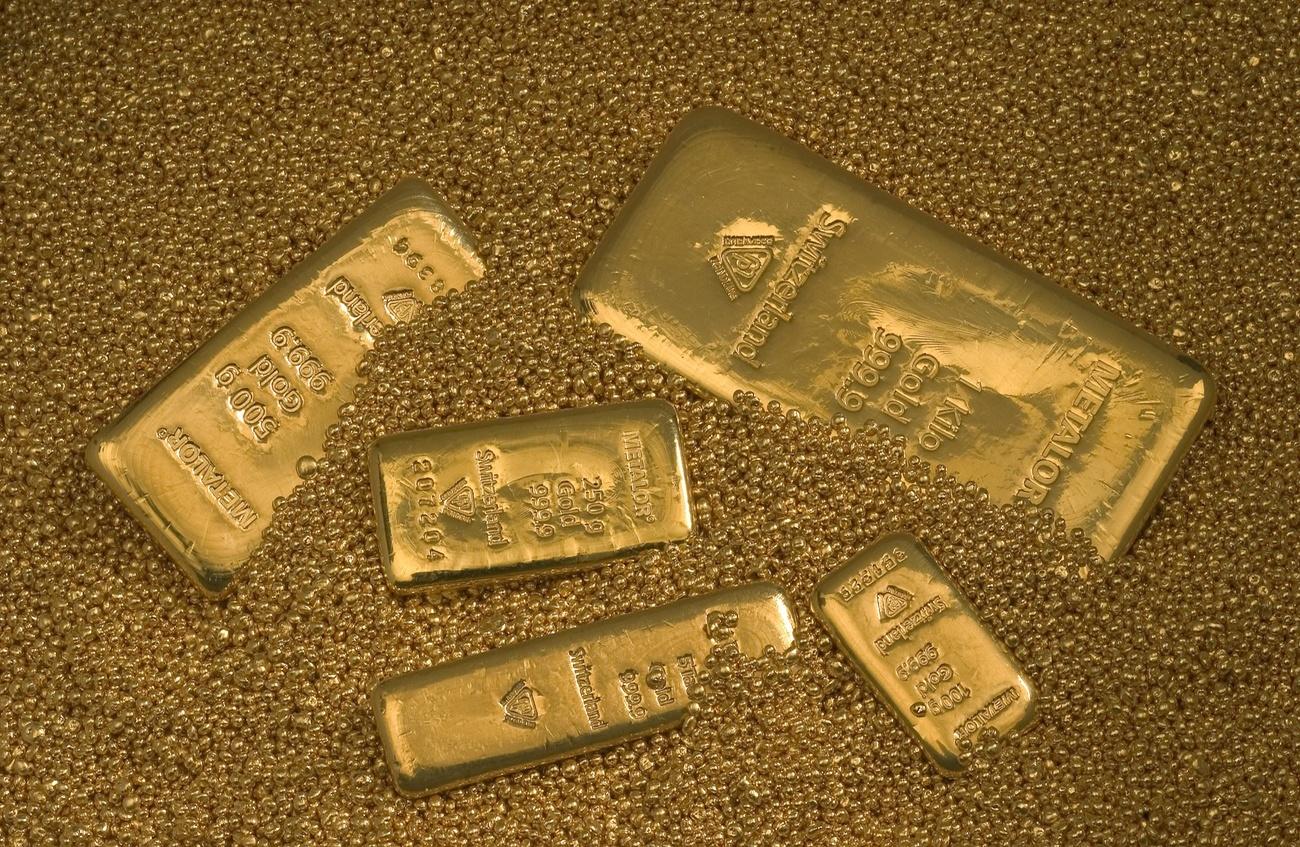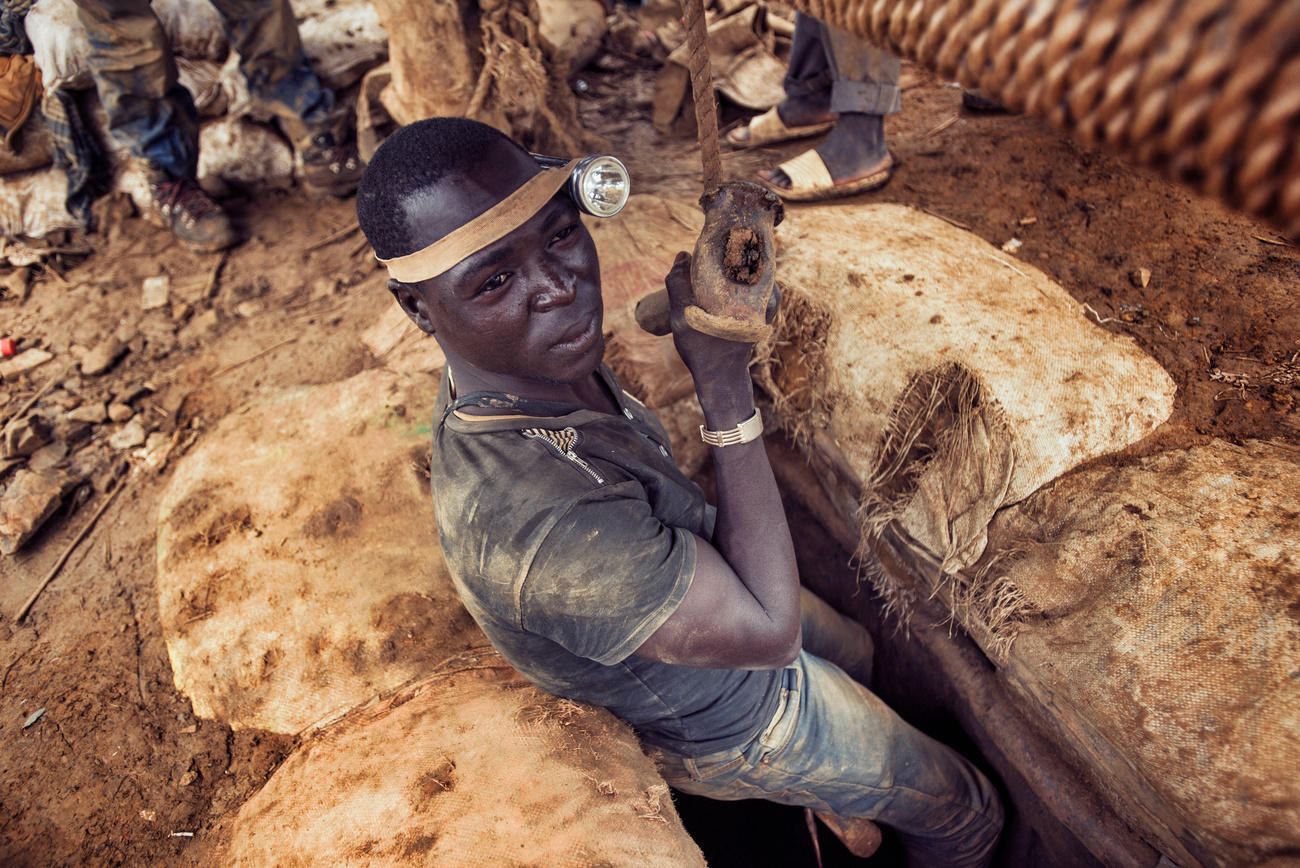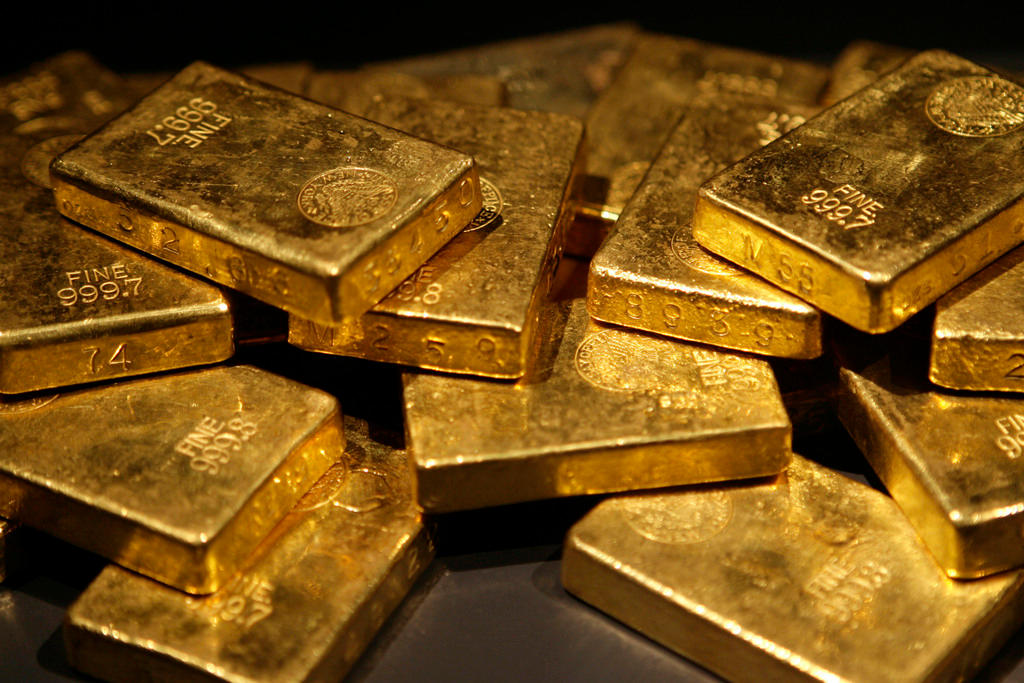Can Swiss refineries stay ahead of forgers?

Swiss refineries have come under the spotlight following revelations that fraudulently stamped gold bars with their logos are being used to launder smuggled or illegally sourced gold. Refineries rely on new technologies to stay ahead of forgers and preserve their reputation.
“The latest fake bars … are highly professionally done,” Michael Mesaric, the chief executive of Swiss refinery Valcambi told Reuters during their recent investigation External linkinto the matter. He calculates that a couple of thousand gold bars have been found but says that there could be more still in circulation.
Over the past two years, the American bank JPMorgan has discovered more than a thousand contraband gold bars in its safes. Some forgeries carry the signatures of major Swiss refiners.
Switzerland processes about 2,000-2,500 tonnes of gold a year, worth approximately $100 billion (CHF100 billion).
The trademarks of Valcambi, PAMP, Argor-Heraeus and Metalor are among the most common and trusted in the industry.

More
From Nazis to refineries: How Switzerland has handled the world’s gold
Switzerland’s added value
“There are certain origins that are not marketable,” explains Swiss gold industry and anti-corruption crusader Mark Pieth. “Indian or UAE products have a limited market. They can be exported to India or China. But they are not imported by banks, by serious banks.”
“Swiss bars (on the other hand) are fully marketable,” he adds. “They are the referee refineries. They are the top of the top. This has to do with quality control in Switzerland. That is one bit that works well in Switzerland.”
On each ingot in circulation is its weight, gold content, serial number and stamp of the place where it was manufactured. The Metalor group, based in Neuchâtel, was caught up in JPMorgan’s discovery.
“A bank noticed beginning of 2017 there was a problem having identified identical serial numbers on 1kg bars,” Metalor CEO Antoine de Montmollin told swissinfo.ch. “The Metalor logo and hallmark were relatively poorly imitated and trained eyes rapidly detected the counterfeiting. We have not identified any other Metalor counterfeit bars since then.”
The 2,000 fake ingots discovered by JPMorgan are certainly very similar to the real ones, making them hard to detect and an ideal fund-runner for narcotics dealers or warlords. The Federal Customs Administration (FCA) told swissinfo.ch that 655 counterfeit gold kilobars had been reported to prosecutors in Ticino since 2015. Six cases have been identified. Three of these were reported to the public prosecutor’s office in Ticino for investigation. The remaining three were dropped because they had already been reported directly by the refineries themselves.
The canton of Ticino is home to the refineries of MKS Pamp refinery, Argor-Heraeus and Valcambi. No forgeries have been reported to police in Neuchâtel, according to Reuters.
Keeping track of gold
Technological improvements may allow forgers to produce better fakes, but they are also giving refineries a way to fight back.
Metalor says it is using a system developed by SICPAExternal link, the world leader in bank note ink, to prevent counterfeiting. The SICPA system allows the authenticity of the ingots to be verified using a lamp and a security seal. This makes counterfeiting an ingot extremely difficult.

More
The shady origins of gold refined in Switzerland
“The main challenge or threats are to prevent such counterfeiting and protect our reputation,” De Montmollin said. “We are confident that thanks to this technology, it will prevent any risk of forgeries in the future.”
SICPA says its technology, called BullionProtect, has been adopted by Metalor and two other companies in the Asia Pacific region with high compliance standards in term of origin and conditions of extraction. “We estimate that the adoption of security seals for gold bullion but also other precious metal will accelerate in the next few years.”
Multiple safeguards
The seals are only one piece of the puzzle in an end-to-end secure supply chain. “A single security feature is not enough,” says the company, which is why its solution has “multiple visible and invisible features making stamps virtually impossible to replicate in all their dimensions.”
MKS Pamp uses the VERISCAN scanning system to identify registered bullion product and facilitate the detection of counterfeits.
The technology focuses on the “the metal’s microscopic topography like a fingerprint” or “surface profile” to distinguish between ingots that appear identical in size, shape and weight.
Argor-Heraeus in Ticino also has a similar system. But these elaborate tagging methods only come into play once the gold has been melted, notes Pieth. The gold bars would be tagged allowing you to follow their fate beyond Switzerland.
One problem hindering greater transparency in the gold industry, according to Pieth, is that money laundering legislation only kicks in once you go beyond 9995 out of 1000 in terms of gold purity.
The raw gold, the dore, that reaches Switzerland is only 60 to 80 percent pure and as such it does not fall under money laundering regulations.
“Money laundering regulations only works downstream,” explains Pieth, a gold laundering expert who recently wrote a book on the subjectExternal link. “It doesn’t work upstream from the origin of the mine to the refinery.”
“The refineries don’t really know or have to know where they are sourcing from. They go one step back. They know the intermediary bringing the gold or if it is a large mine. They wouldn’t know if it is artisanal beyond the collector in a country or under what conditions it has been sourced.”

In compliance with the JTI standards
More: SWI swissinfo.ch certified by the Journalism Trust Initiative









You can find an overview of ongoing debates with our journalists here . Please join us!
If you want to start a conversation about a topic raised in this article or want to report factual errors, email us at english@swissinfo.ch.